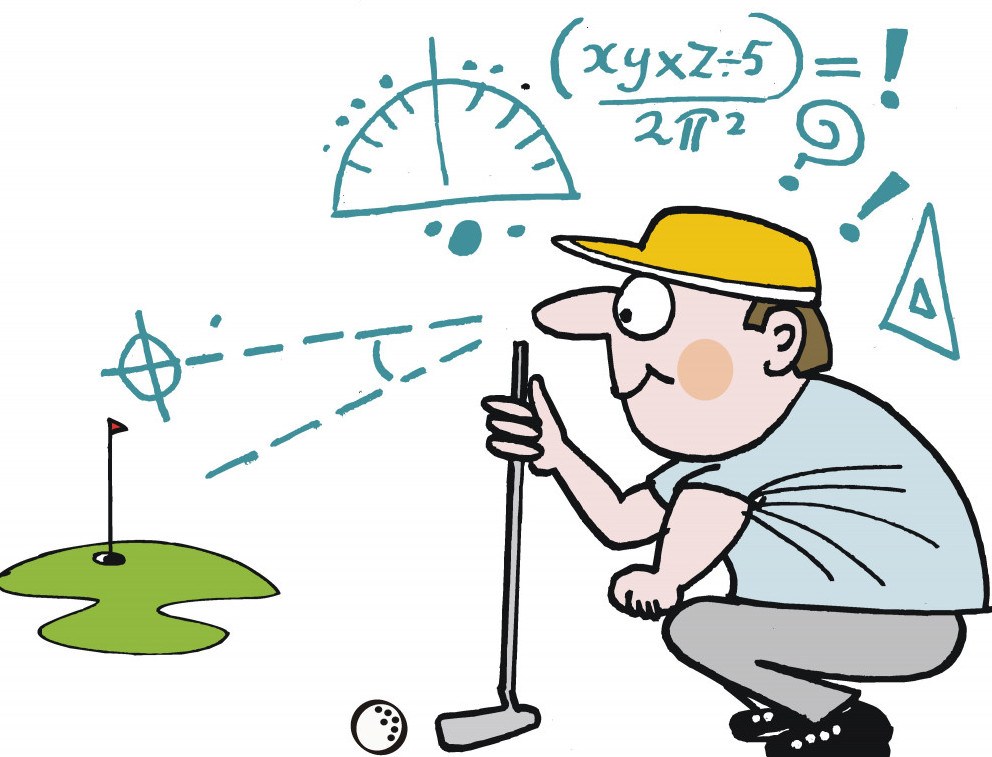There are many important shots in golf and putting in all its various forms is certainly up there with the best of them. Whilst something like a short putt or a tap in doesn’t really need any explanation, other types of putt aren’t perhaps that clear. So what is a lag putt for example and why is it perhaps the most important putt you will hit on every hole?
The Definition of a Lag Putt
A lag putt is a (generally) long putt that you hit with the intention of getting it close enough to the hole for the next putt to be as close to a sure thing as possible.
This might seem like a strange notion to the non golfer, but it is actually one of the most common shots you will hit. Many, maybe even most putts really aren’t hit with the intention of getting the ball in the hole necessarily. Of course, none of us are trying to miss on purpose, but it often feels more like making the putt is a bonus rather than the main thing.
This is, sadly, more and more true the older we get. As the yips appear for some of us and as we tend to think more about three putts than holing everything, leaving that first putt as close as possible becomes a matter of keeping our sanity as well as a good score!
Better Players Lag Putt More
It is one of the ironies of golf that as we progress towards becoming better players, we actually tend to hit more of these longer putts. As strange as this seems, it actually makes sense when you look at some of the ways to play better golf. For example, one of the stats used to measure how good we are getting is the number of greens that we hit in regulation. This is basically the par for the hole minus two for the two putts that are considered reasonable/par on every hole. A beginner isn’t going to hit many greens at all.
As we get better, we will start to hit a few. These greens generally won’t be close to the hole and will leave a long putt. On the greens we miss, we will often be pitching or chipping which will leave us closer to the hole than an approach shot with a longer club.
As an example, let’s say we are playing a par four. We hit a driver/hybrid or whatever off the tee. Our second shot is often going to be at the very least a mid iron into the green. For example, we might have 150 yards and be hitting a seven iron. We can certainly hit the green here, but unless we are looking to get on tour, most of the time this isn’t going to be knocking down the flag stick. We are usually happy to catch a piece of green somewhere. This is going to leave us a long putt. Let’s say 10m/30ft or so for argument’s sake.
If we aren’t quite as good and don’t actually manage to hit the green. Perhaps we finish twenty yards short of the front edge. We then chip the ball and there is a good chance we are actually putting from a lot closer than the 30 ft/10 m of the previous example. Perhaps we are 15 feet away instead.
Of course, we have played a shot more and this makes sense because we aren’t as good as the guy hitting greens in reg. However, this better golfer is going to be facing more of these long putts.
Is Putts per Round a Useful Stat?
As an aside, this is why simply counting the number of putts per round isn’t always that useful. Someone who hits every green and takes 36 putts (which would be considered a high number) is shooting par. A golfer who hits 3 greens and takes 30 putts will be shooting at least 9 over, possibly more.
So back to our subject of lag putting. When we are faced with this 30 foot putt, of course we want it to go in. However, there isn’t much more disheartening than hitting a green in regulation and making a three putt bogey. What we want to be able to do is make that second putt (hopefully for par) as easy as possible.
This can sometimes mean erring on the side of caution and ‘cosying’ the ball up to the hole. Perhaps there is a slope after the hole and the last thing we want is to see our putt burning the edge of the cup and then catching the slope and heading down to another plateau on the green and leaving ourselves 15 feet coming back.
So what sort of distance should we be thinking about for our first putt? Well, obviously, as close as possible! In reality though, most golfers have unreasonable expectations of how good they should be on the greens. For example, stats show us that the make percentage of a putt from 30 feet on tour is just 7%! Yes, the best putters in the world are going to two putt (at best) almost 19 times out of 20 from that distance. Are they all trying to make it? Probably, yes, most of the time at least. However, they don’t want to leave it too far for the second putt.
For most of us, a reasonable idea is to leave less than ten percent of the first putt distance. In other words, if you are putting from 30 feet, aim to leave it less than 3 feet from the hole. In fact, we can even be a little bit smarter than this. Leave it within 10 percent of the first putt’s distance, but in the most makeable direction.
Uphill Putts Really Are Easier
Let’s get back to that par four example. We are standing over this 30 foot putt. We certainly want to see it track all the way to the hole and walk it the last few feet twirling the putter Tiger Woods-style. However, in all honesty, we really want to see it close enough to hear our playing partners say ‘pick it up.’ If we are playing in a strokeplay event, we want it to be an easy finish.
So if this 30 footer is downhill all the way, we don’t actually want to leave it short. Giving it enough to get it past the hole makes a lot of sense because it will leave us an uphill putt. The same is true if our first putt is uphill. It is also valid if we are playing across a break in the green. The key is leaving it both close enough and also avoiding either a big down hill or cross hill ‘knee trembler’ to close out.
If putting is a particular strength (and I wish that were my case!) another good method is thinking in terms of the bin lid. A dustbin lid (or I would guess, garbage can lid depending on where you are in the world) is perhaps a metre/3 feet or so across. The aim is that you can always get the ball withing this virtual bin lid if it were placed over the hole.
You won’t always manage this. In fact, nobody can. It would mean that you can always get the ball inside two feet from anywhere on any green, but the idea is pretty sound. It means letting go of the idea of the hole itself in many cases and just thinking about knocking it dead.
In many ways, this dustbin lid sums up just what a lag putt is all about. Sinking that putt is a bonus because a really good lag putter will either by tapping in a lot of very short putts or hearing ‘that’s good’ as he walks up to pick his ball up yet again.



